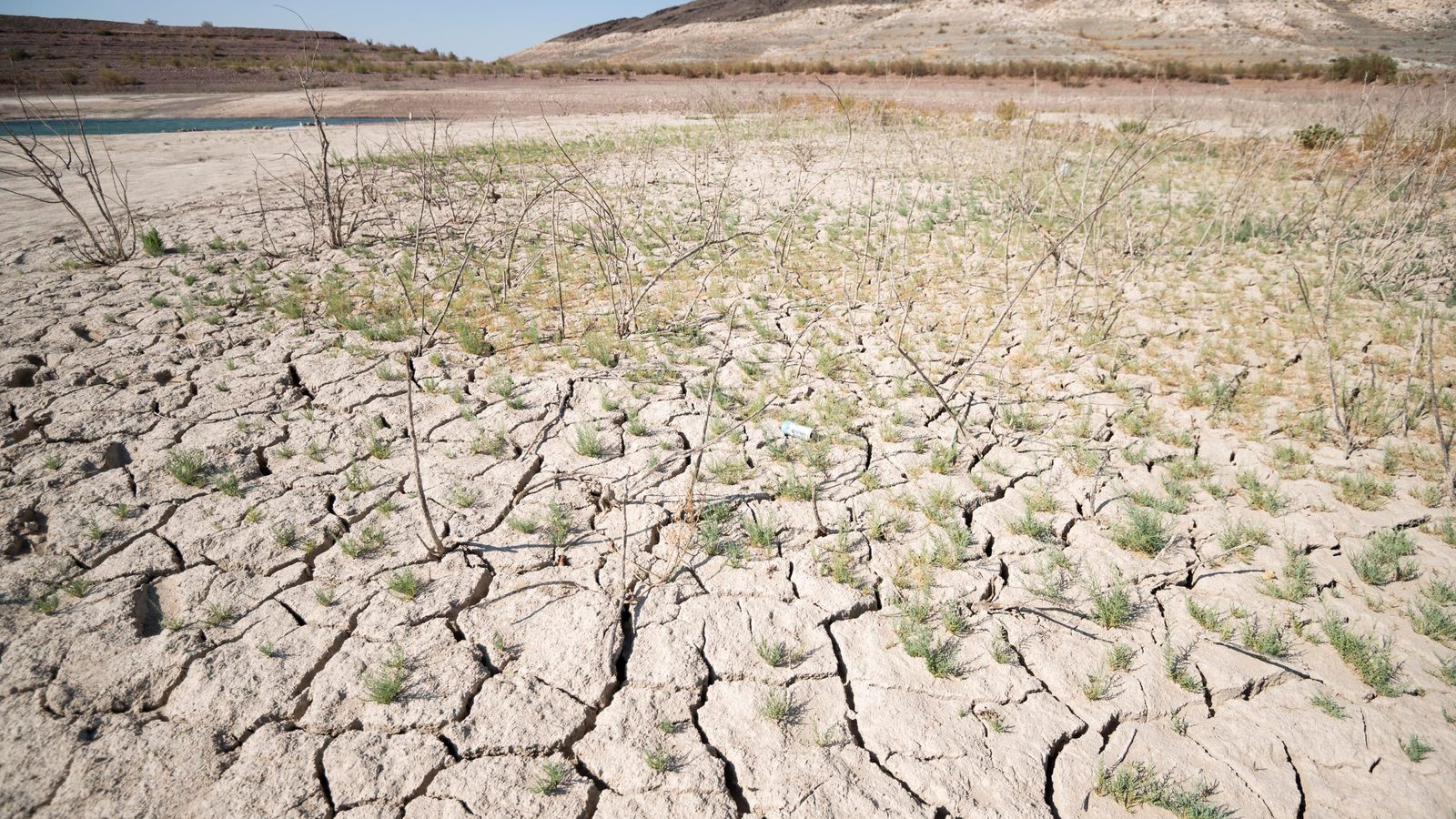The US government has released even more dire drought projections for a river that serves 40 million people.
Lake Mead and Lake Powell – reservoirs along the river that are used as barometers to judge how much supply some states will get from the water source – have dipped to historic lows.
The lakes had a combined capacity of 39% on Wednesday, down from 49% at this time last year, the Bureau of Reclamation revealed.
It comes after the agency declared the Colorado River’s first-ever shortage, meaning the Arizona, Nevada and Mexico area is expecting less water supply than normal next year.
Lake Mead, on the Nevada-Arizona border, is used to measure water supply projections for states in the river’s lower basin, such as Nevada, Arizona and California.
Meanwhile, Lake Powell, on the Arizona-Utah border, acts as a guide for upper basin states, including Colorado, New Mexico, Utah and Wyoming.
The Bureau of Reclamation said on Wednesday that Lake Mead has a 22% chance of dropping to an elevation of 304 metres (1,000 feet) above sea level by 2025.
White House responds to ‘horrific’ photos of Texas border agent on horseback with ‘whip’ to deter migrants
COVID-19 has now killed as many Americans as the Spanish flu — approximately 675,000
France cancels missile collaboration meeting with UK amid AUKUS submarine row
Federal officials say by the time the water drops to 272m, it becomes “dead pool water,” meaning it cannot be drained by gravity through a dam’s outlet works.
It would therefore become inaccessible to the lower basin states, such as California which is the most populated state in the US.
The bureau said that by 2025, there’s a 66% chance Lake Mead will reach a level where California would have to impose even more extreme water conservation measures.
In Nevada, the organisation that supplies water to most of the state’s population has already constructed “straws” to draw water from further down Lake Mead as its levels fall.
Meanwhile, the bureau’s projections also show that the drought could impact electricity supplies from hydropower on Lake Powell.
Smaller reservoirs upstream have been releasing water into the massive lake so the Glen Canyon Dam can continue producing hydropower.
The agency’s projections show a 3% chance Lake Powell will reach a level where the dam cannot produce hydropower as early as July 2022, if the region has another dry winter.
“The latest outlook for Lake Powell is troubling,” Wayne Pullan, the bureau’s director for the upper basin, said in a statement.
“This highlights the importance of continuing to work collaboratively with the basin states, tribes and other partners toward solutions.”
Please use Chrome browser for a more accessible video player
Lake Powell and Lake Mead, the largest man-made reservoirs in the US, largely rely on melted snow.
They have been hard hit by persistent drought amid climate change, characterised by a warming and drying trend in the past 30 years.
The seven states that rely on the Colorado River signed off on a drought plan in 2019 to help prop up the lakes by voluntarily contributing water.
Subscribe to ClimateCast on Spotify, Apple Podcasts, or Spreaker.
All agree more needs to be done and are discussing what will replace a set of guidelines for the river and the overlapping drought plan when they both expire in 2026.
The federal government also has formed a working group.
The Bureau of Reclamation’s five-year projections are meant to help water managers better plan for the future using the best available data, said Jacklynn Gould, who oversees the lower basin for the agency.






















